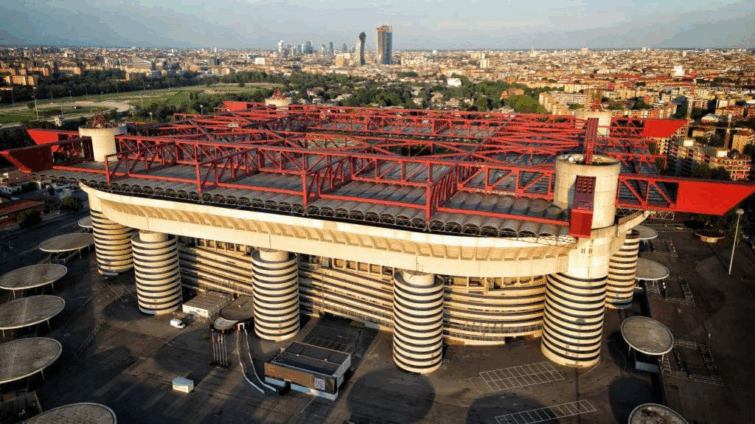AC Milan and Inter have finalised the purchase of their San Siro stadium and confirmed plans to demolish and replace it with a 71,500-capacity arena.
The demolition of San Siro, widely regarded as one of the world’s most prestigious football stadiums, has been mooted for years as its condition has deteriorated over time.
Now the two clubs, who have shared the stadium since 1947, have paid €197m (£173m) to the city council to take control of the structure and surrounding land, which they say is a sign of “shared ambition for long-term success”.
The new stadium will have a capacity of roughly 4,000 fewer seats than the current San Siro and will be designed by firms operated by Sir Norman Foster and David Manica, who played crucial roles in the planning of the new Wembley Stadium.
BBC Sport has spoken to key figures and finance experts in order to determine whether the move makes sense and find out if it could help two of Europe’s most famous clubs compete regularly against the more wealthy Premier League sides.
Why do Milan and Inter want a new stadium?
“For us, this a historic moment,” says Milan chairman Paolo Scaroni. “It has taken five or six years to reach this point and we had great support from our owners RedBird.
“San Siro has been excluded by Uefa as a stadium for Euro 2032 – it simply doesn’t have all the facilities that are needed for modern football. We badly need a new stadium.
“We have always had a good relationship with Inter, so it makes sense to continue sharing the new stadium and split the costs of building and running it.”
Though designs will only be published in the first half of 2026 and no completion date has been set, the purchase of the stadium is a crucial step as both clubs aim to return to past glories.
In the late 1990s and early 2000s, Serie A was the world’s pre-eminent football league. Its clubs spent the most money, bought the best players and attracted the attention of fans around the globe.
But over the past 20 years, the division has undergone a steady decline. Its clubs’ performances have dwindled at the elite European level, average attendances at stadiums have dropped significantly, and even its most illustrious teams are typically spending less each summer than lower and mid-table Premier League teams.
The long-term drop-off can be tracked by glancing at Milan and Inter’s results in the UEFA Champions League since it was rebranded in 1992.
Despite Inter reaching two finals in recent years, they last won it in 2010 and Milan most recently in 2007, even though only Real Madrid have won the competition more times in total than the Rossoneri.
But what has been behind those diminishing results?
Finance has played a key role. There have been 12 changes of prime minister in Italy since 2000, and its economy has endured regular turmoil.
Milan and Inter have also undergone a series of destabilising ownership changes, both passing from Italian businessmen to Chinese ownership before being bought by respective American investment vehicles in the past few years.
“The political and financial crises that have hit Italy have weakened the country’s business fabric and the ownership structures that made Serie A prestigious and successful,” says Marco Bellinoza, business journalist at Il Sole 24 Ore.
“Economic and political weakness has impeded the growth of top-level football. Only with the transition to the current US ownership is the transformation from non-self-sufficient sports clubs to fully-fledged businesses taking place.”
While TV rights have generated enormous broadcast revenues for Premier League sides, the same income stream has lagged far behind in Italy, setting its clubs back.
“Serie A is €4bn (£3.5bn) behind the Premier League in terms of total cumulative revenue for its clubs, and that is principally down to the broadcast contracts,” explains Dan Plumley, sport finance professor at Sheffield Hallam University.
“That’s a gap you can’t really catch up, so they’ve got to look to grow revenue in other ways.”
Source: BBC







Leave a Reply